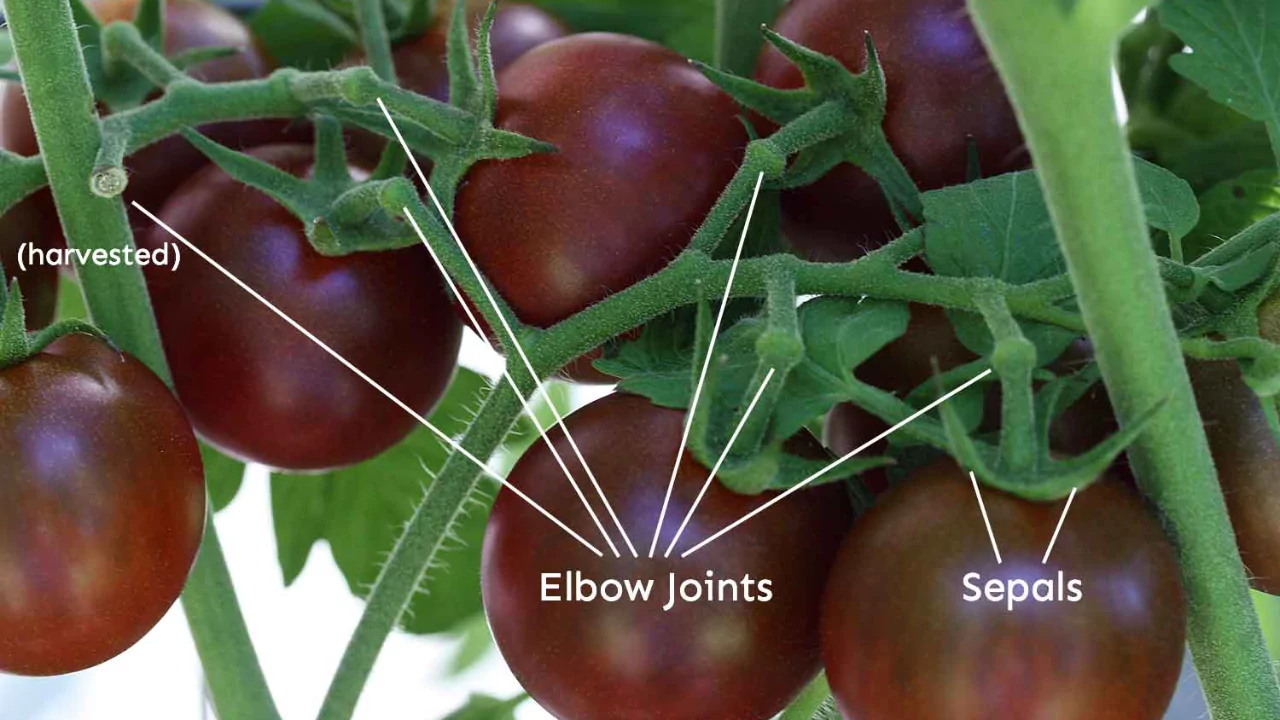
Nothing beats fresh, homegrown tomatoes plucked straight from your garden. Moreover, who does not appreciate the rewards of their diligent work?
Tomato plants enhance any vegetable garden. Additionally, most of us use tomatoes in our daily meals.
If you intend to grow tomatoes in your garden, black cherry tomatoes could work best for you. All gardeners appreciate ease of growth and productivity, traits that black cherry tomatoes offer.
In this guide, we will discuss the best practices that will ensure you have a bountiful harvest of black cherry tomatoes.
How Do I Grow a Black Cherry Tomato Plant?
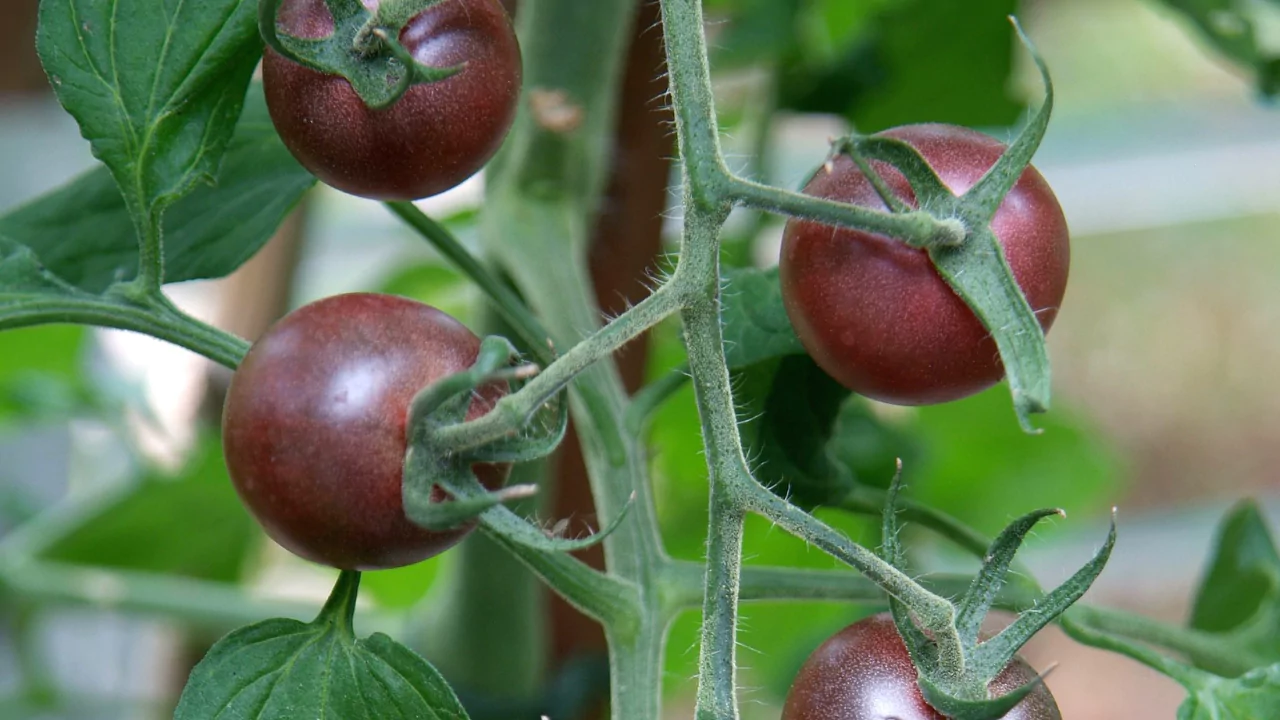
Despite being diminutive, the black cherry tomatoes are indeterminate plants. Do not be deceived by their small stature. They require tall, sturdy cages for adequate support as they grow towards maturity.
The heirloom tomato black cherry has a dark color, is round, and boasts a sweet and rich flavor.
Mature black cherry tomatoes will measure around 1.5 inches in diameter.
You can grow black cherry tomato seedlings indoors or outdoors. If frost is in the forecast, as a precaution, it is always best to start indoors.
The seedlings can germinate for 6 to 8 weeks while waiting for favorable weather conditions. They should be transplanted outside after the last frost when the temperatures are stable. A black cherry tomato plant will thrive best at temperatures 50°F to 95°F.
When you are ready to transplant each seedling, make sure to pick an area with full sun for the plant can handle the heat. Ensure the seedlings are provided with 6 to 8 hours of sunlight daily in addition to nutrient-rich soil for them to yield fruits that are packed with flavor.
The essential primary macronutrients to be provided to the plants are nitrogen, phosphorus, and potassium.
The plants should be spaced around 36 inches apart with each plant stem. While setting the plants, pinch and remove the lower leaves to place two-thirds of the plant stem beneath the soil.
Supporting Your Black Cherry Tomato
The size of the black cherry tomato can be deceiving, as the plants will be 5-7 feet tall at maturity.
Due to the height the plant gains after reaching maturity, proper system to support and hold the vines is important. There are several reasons to support the plants as vines will be able to grow unhindered, such as the following:
- Keeping plants and fruits off the ground, which prevents fruit rot or sunburn.
- Making it easy to spray, dust, and care for them.
- Ensuring the fruits get the full sun, helping them acquire a rich flavor.
- Making harvesting easier as a supported plant is easier to navigate.
Two common ways to support the growth of tomato plants are caging and staking.
Caging
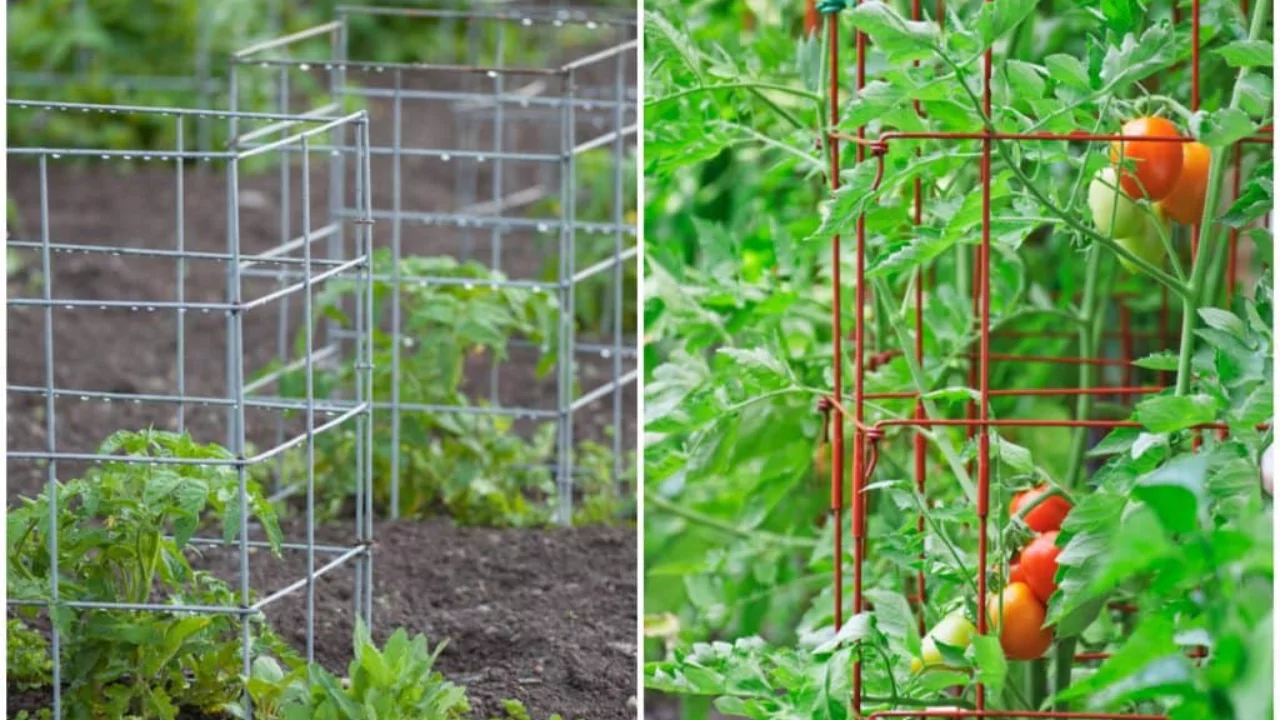
Caging any supported system is easier than staking as the support system can be made from wire used to reinforce cement.
Cages for black cherry tomato plants must be at least 5 feet high, which is convenient as most gardening stores sell these cages.
Caged plants should be placed 3 feet apart with a cage placed over each.
Small wind and cold protection can be provided with plastic wrap around the bottom of the cage, which needs to be 18 inches from the ground for adequate mobility while offering wind protection.
Adding black plastic mulch to your garden will help your tomatoes bloom early while also providing protection.
For pruning, the black cherry caged tomatoes should not be pruned past the fifth main fruiting branch. The pruning process mitigates competition between plant parts and promotes the growth of bigger and better fruits earlier.
Like with any other agricultural practice, caging comes with disadvantages. For instance, the tomatoes will not ripen as quickly as they do with staking.
Nonetheless, caging does reduce the chances of these tomatoes getting burnt or cracked.
Staking
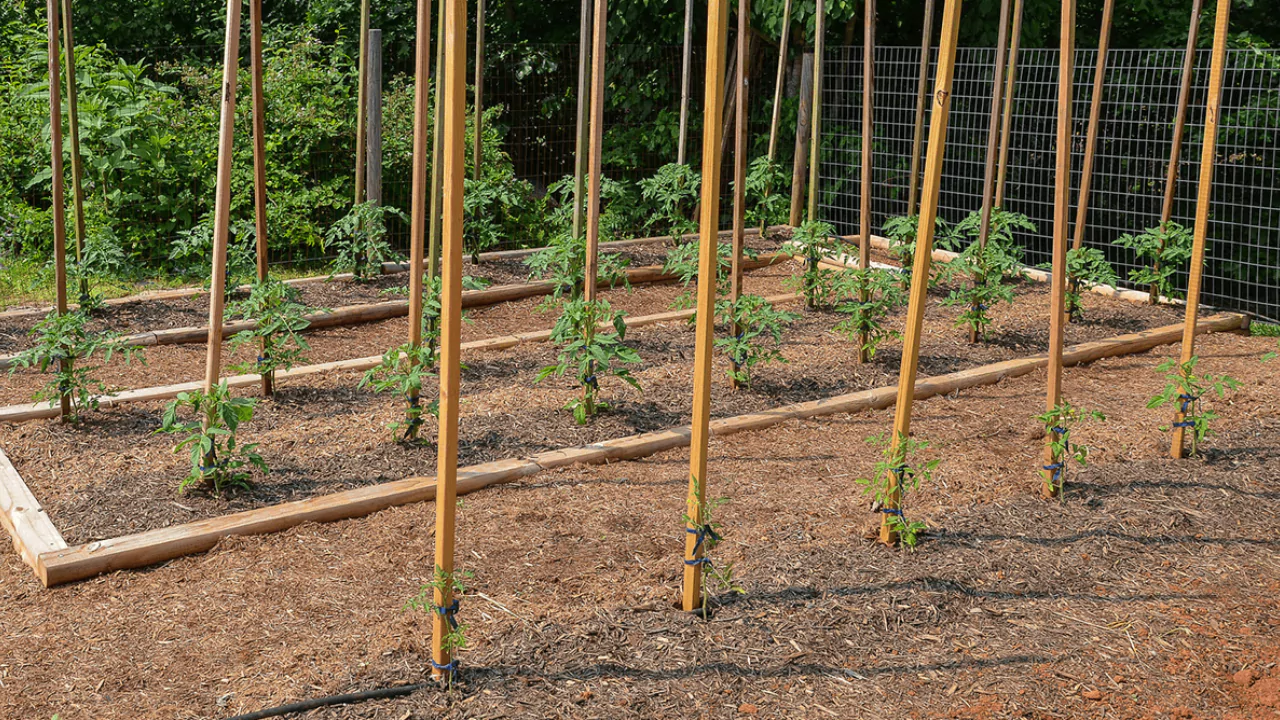
Staking requires using wooden or metallic stakes of 5 to 6 feet in height. Wooden stakes must be an inch thick, while thinner metallic stakes can be used as they are more durable.
If you decide to go with wooden stakes, ensure they have not been treated with any chemicals.
Another option is to go with metallic stakes, which tend to be more durable. Thinner ones like rebar rods work great.
If you decide to stake your cherry tomato black plants, plant them at 18 to 24 inches apart. Drive a stake 3 inches from the base of each plant and 3 inches from the base to ensure it is firmly secured into the ground.
Keep in mind that you will have to regularly prune your plants to avoid bushy growth. Otherwise, the plant will become too heavy and reduce its fruit-bearing capacity.
To provide additional support for a staked plant, as demonstrated in the video below, run a polypropylene cord from the first stake to the last stake.
Start by tying the cord on the first stake 6 inches above the ground. Then, as you progress to the last stake, wrap it around the next stake at least once.
Common Problems When Growing Black Cherry Tomatoes
Statistics suggest that 95% of American gardeners have tomatoes in their garden. This number would reach a perfect 100% if the remaining 5% tried a homegrown tomato.
Anyone who’s tried tomatoes from the garden and compared them to the store-bought variety will testify to the difference in flavor and the sheer delight that comes with eating the fruit.
Even better, when you grow your own, you have the option to decide which pesticides and fertilizers to apply on the plants.
However, even with this ease, frustration is bound to arise with a cherry tomato plant. They sometimes set no fruit, or they ripen and develop ugly, spongy, black blemishes on the bottom.
And that is not the end of the story. Tomato plants can suddenly appear bedraggled. They look healthy one night and the next morning, they are a skeletal version of their previous self. This is often the case when the weather has been frosty.
This is the final section of the collection and identifying all common tomato plant problems is a skill every gardener should have.
The lack of a proper environment fits tomato plants is a common situation. An example of a tomato that can withstand extreme conditions is the heirloom black cherry tomato. Nevertheless, heirlooms black cherry tomatoes are still susceptible to tomato issues.
Some of these problems include:
Blossom-End Rot
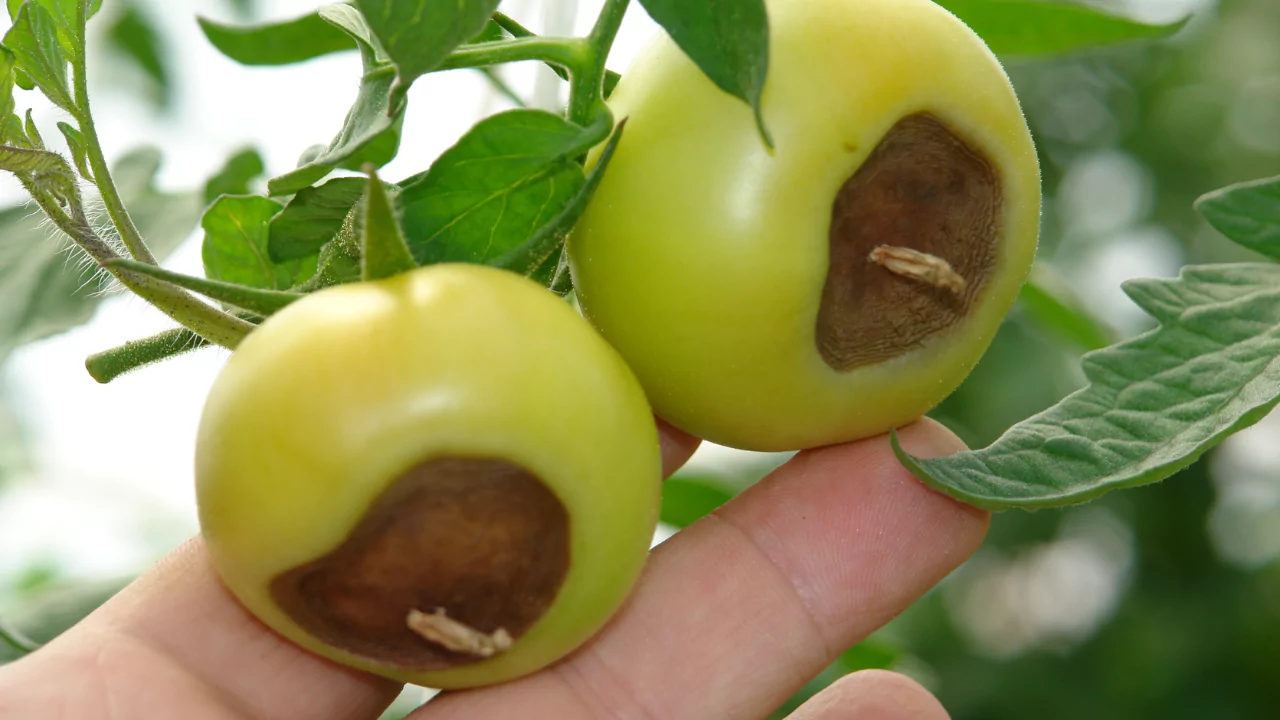
Extreme moisture levels prevent plants from absorbing enough calcium from the soil. When this happens, fruits start rotting from the bottom up.
Excessive Nitrogen, soil Ph level of higher acidity can also contribute to blossom-end rot, to remedy blossom-end rot controlling soil nitrogen level is a must.
A simple preventative measure is to mulch your plant to help the soil retain enough moisture.
Flower Drop
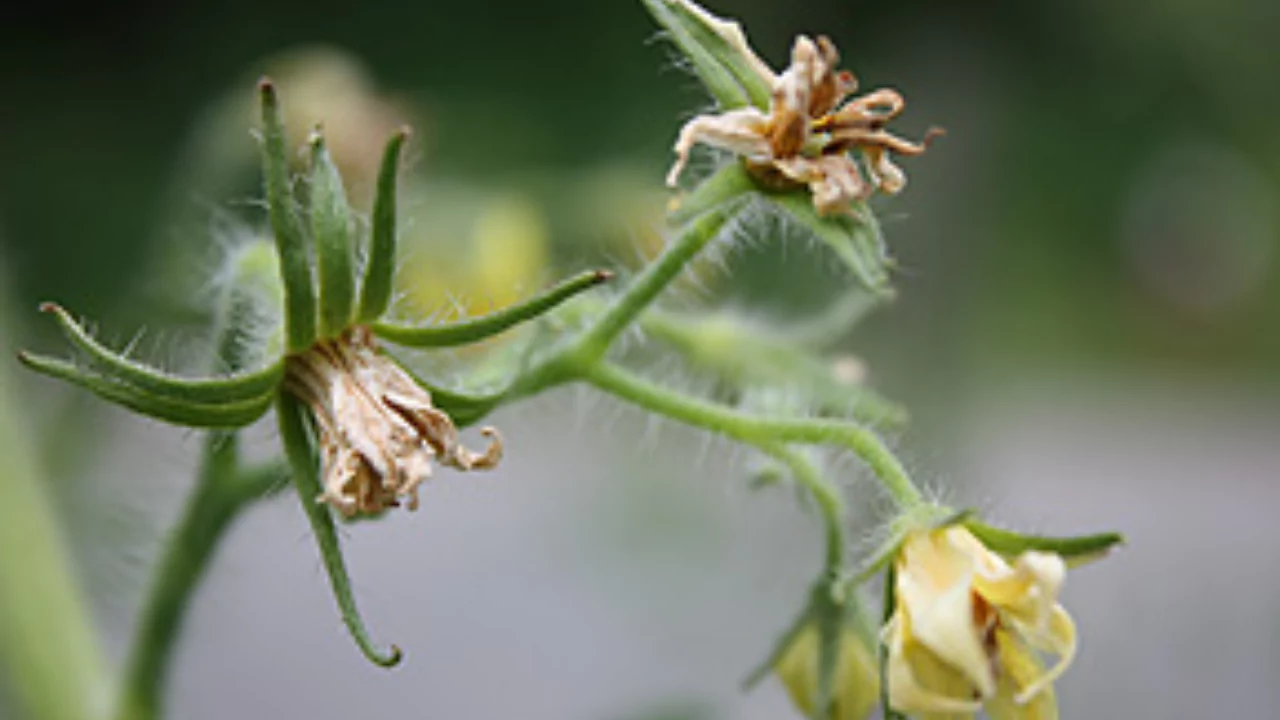
This is a condition which occurs in tomatoes and prevents full blossom formation leading to reduced fruit set. Refrigerated conditions, lack of nutrients, lack of pollination can contribute to blossom formation leading to blossom drop a synonym of flower drop.
Factor contributing to higher blossoms or flower drop are lack of moisture, inadequate light, poor pollination, inadequate nutrients, and too much nitrogen all are known to contribute too flower drop.
Clearly, altering the weather is impossible, but you can strengthen the plant with fertilizers or organic pesticides such as neem oil. To attract pollinators, asters and milkweed can also be planted.
How Do I Harvest and Store Black Cherry Tomatoes
Around 64 days, your plant will have developed to the point where you should be able to harvest and begin ripening the fruits. Cherry black tomatoes will have a deep burgundy color and be firm to squeeze when ripened to perfection.
To harvest fruits that are ripe, squeeze gently to pull the fruit off the stem. Alternatively, a pair of clippers can be used to cut the fruit from the vine.
Fruits can be placed in a bowl to be stored waiting to be fully ripened.
For best storage, tomatoes should be kept indoors and at room temperature. Refrigerating these sensitive fruits results in a loss of flavor. Sub 50°F temperatures affect flavor compounds, leading to a loss of flavor.
To maintain flavor while extending shelf life, harvest them with their stem and cap. Store them with the stem and cap until ready to consume.
Fruits and vegetables can last longer when picked(some time) before their peak ripeness. Whenever you pick them, a week’s time guarantees peak flavor and nutrition when using them.
Tomatoes are the simplest to cultivate compared to other fruits and vegetables you can grow in your garden.